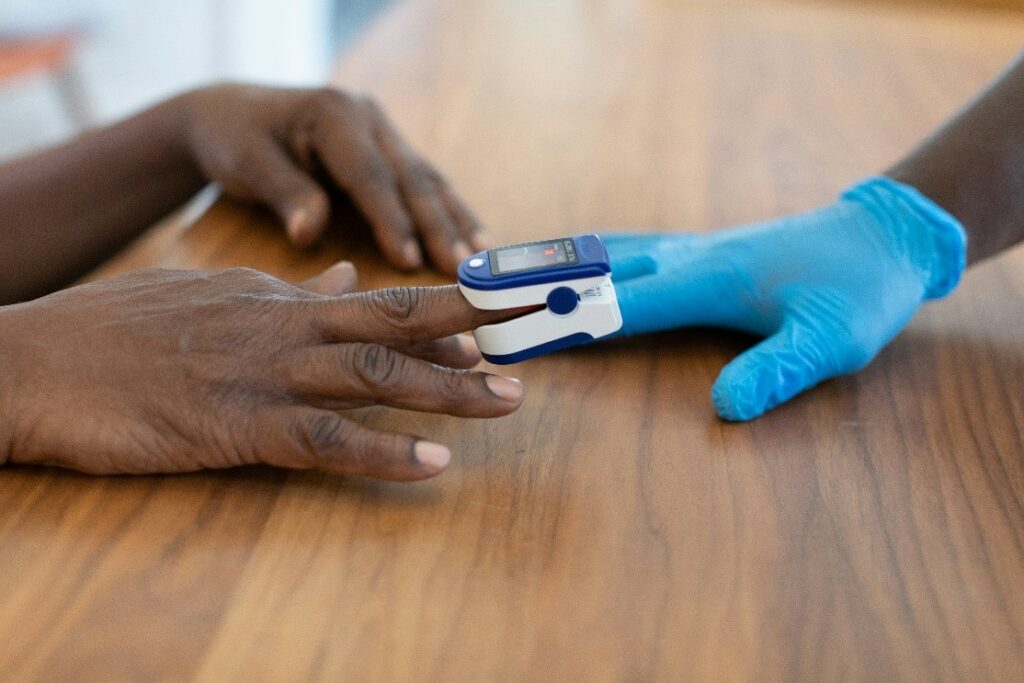Strategic Divestments: Maximising Product Lifecycle Value
Published Oct 21, 2024
Published 23rd May 2024

Global development requires navigation of multiple regulatory frameworks and research cultures to achieve the ultimate goal of approval for the preferred label in all territories. Working with regulatory professionals that span regions can optimise the opportunities and value of global development. Regulatory consultants need to be able to engage and negotiate with local regulatory agencies to align on scientific requirements and standards, and to enable a successful global development program.
Regulatory professionals are key strategic partners in the generation, evaluation and coordination of global development plans. Defining the target product profile and product label, assessing regulatory requirements, opportunities and precedent, and how each of these elements are supported by a proposed clinical study design are essential to timely and efficient global product development. A collaborative regulatory team with experience in multiple territories allows for critical appraisal of a primary end point and study design, suitability of the population and impact of differences in the standards of care across jurisdictions. In addition, a clear understanding of associated regulatory requirements for marketing authorisation application (MAA), including paediatric development and device registration, are also essential to the development of a strategy that supports a timely submission and authorisation in each targeted region.
The wording of the labelling for therapeutic indications may vary across jurisdictions, depending on agency requirements for terminology, past precedent, and interpretation of the interventional effect. Another important consideration is the difference in approaches to pricing of medicines in different territories. For instance, the pricing of medicines within the EU is controlled at a national level following evaluation of efficacy and cost to the healthcare system, this may alter requirements for the terminology of the target indication. Regulatory consultants with understanding and experience of the impact of these subtleties can provide invaluable insight into the TPP process.
There are opportunities in conducting pivotal studies outside the preference territory(ies). From a regulatory perspective this could expedite trial application approvals and support enhanced patient recruitment. However early-stage engagement with the target regulators to leverage support for studies outside region can be critical to ensure collection of meaningful data to meet multiple regional requirements.
Many territories place an emphasis on their own region requirements with the focus on the study population being reflective of the territory. The EMA have gone some way to address this situation with guidance on extrapolation to the EU population (1). Similarly, the FDA provide some direction on the use of foreign data. Both look to address the influence of intrinsic and extrinsic factors (2). Japan have been focused on ensuring adequate dose response data in the local population but the update in 2012 supplement provided options for bridging to the East Asian population facilitating the use of foreign population data (3).
Aligning to ICH E5 R1, when conducting the clinical studies outside the target region, data acceptance will need to consider any regional differences in expectations for the statistical analysis including sample size estimations, randomisation and presentation of the subgroup analysis considering the population bias.
The regulatory expectations for clinical endpoints can diverge and requirements for the control arm of EU vs US vs Asia can lead to opposing views due to differences in the standard of care. For instance, in oncology development, the FDA has issued guidance to incorporate surrogate endpoints such as progression free survival, particularly for development programs within the accelerated pathways, whereas the EU place greater emphasis on clinical endpoints of overall survival with the need to demonstrate the link to surrogate endpoints. However, this is not across all therapeutic areas
Both sides of the Atlantic recognise the importance of the integration of patient perspectives and outcomes into the development and approval of medicines. EMA centres on multiple domains for generalized assessment of Health-related Quality of Life (HRQOL), while the FDA focuses on symptom-specific measures and view HRQOL as supplemental endpoints for demonstration of clinical efficacy rather than a primary assessment. The FDA’s approach means that to ensure success with incorporating PRO components in the approval, early patient engagement is needed to establish critical patient symptoms and development of a robust PRO instrument for endpoint development in collaboration with the regulator.
Even when a study design aligns to the regulatory expectations in several territories there are ethical issues to solve, in particular the protection of subjects and differences in the requirements associated with data collection, such as privacy and transparency of research. Practical issues such as robust site and data management practices are also critical to ensuring the necessary compliance of global clinical trials. Working with local country regulatory expertise eases the navigation of local statute and adherence to GCP.

Scientific advice can be requested from all major regulatory agencies globally and provision of tailored guidance at various timepoints is a core element of a comprehensive global development plan. However, the procedural requirements and timelines for application and receipt of advice may be very different between territories, requiring local regulatory expertise to plan, compile and tailor submission documents and to advise on local agency expectation for the interaction. Interpretation of advice received – which may not be aligned, as described above – is also a key element of regulatory input to global development strategy.
Companies can benefit on occasions from seeking parallel scientific advice from EMA and FDA, or Simultaneous National Scientific Advice (SNSA) from EU national regulatory agencies. This facilitates exchange of agency views on the subjects raised, and if they are disparate, an attempt to find a suitable way forward to enable a single development program. Another area which allows for collaboration between regulatory bodies is the parallel consultations from regulators and Health Technology Assessment (HTA) bodies to ensure data generated during drug development supports evaluation of the reimbursement for the product, as well as the MAA. Recent developments within the EU include the centralisation of the clinical evaluation aspects of the HTA, with the new HTA regulation coming into operation in January 2025.
Planning of multiple global agency interactions and ensuring availability of key company personnel is critical to ensuring consistency and gaining maximum utility from this activity; fortunately, since the COVID-19 pandemic, the majority of agencies hold virtual interactions, drastically reducing logistical issues and reducing the need for travel.
Many global agencies offer incentives for the development of products to treat rare diseases with unmet needs, however the criteria for orphan designation and details of the associated incentives may differ. Regulatory experts can advise on the opportunities that orphan designation offers and any impact of regional nuances on global product development.
Both FDA and EMA offer initiatives for developers in early-stage development for novel therapies for conditions in which there is unmet need. Breakthrough Designation (FDA) and PRIority MEdicines (PRIME; EMA) are expedited programmes that allow enhanced interaction and early dialogue with regulators, with the goals of optimising development plans and increased efficiency and accelerating time to market. Managing accelerated pathways involves early and frequent engagement with the regulators and the need for proactive planning to account for the frequent dossier updates as more data becomes available post approval.
Since the UK left the European Union, MHRA has created new opportunities to accelerate drug development. This includes the innovative licensing and access procedure (ILAP) and innovative devices access pathway (IDAP) to provide a framework for close collaboration between drug/device developers and the agency throughout the development path.
Regulators across the world regularly meet to knowledge share and align on regulatory approaches and initiatives. The FDA and EMA agreed an information sharing in 2003 to allow the agencies to share confidential information regarding scientific evidence, adverse drug reactions. They were able to enhance the harmonisation with GCP and GMP, facilitating mutual recognition agreements on inspections. A pilot between FDA, EMA and PMDA in 2017 highlighted that the exchange of information resulted in more efficient and focused inspections (4).
Scheduling of global MAA submissions is a critical aspect of global strategy from co-ordination of potential inspections to considerations of the cross-border data exchange impacting the evaluation in different territories. For example, in China the MAA must be submitted prior to authorisation in another territory in order to be classified as a category 1 submission.
Leveraging this harmonisation requires an understanding of each territory’s process for adoption.
FDA have recently launched Project Optimus, an initiative to reform the dose optimisation and selection paradigm in oncology drug development. In addition to sponsors, academia, patients and professional societies, FDA intends to collaborate with international regulatory partners to develop guidance that emphasises selection of dose based on both maximal efficacy and better safety/tolerability. This initiative may lead to requests for additional information from regulators regarding dose and dose justification in the oncology field and could significantly impact timelines for global development.
Reliance pathways allow a regulatory agency to use another regulatory agency’s output (e.g., scientific assessment report, inspection report, etc) or a work-sharing program, to inform its decision-making – increasing its own capacity and expertise, improving efficiency, but retaining its own independent decision-making responsibility. A thorough knowledge of the options for reliance procedures can help inform operationalisation of the global development plan in terms of requirements for concurrent MAA submission, reduction in duplicative agency questions and potentially faster patient access in countries where there could otherwise be significant delay in regulatory submission.
Examples of reliance and work-sharing pathways include the EMA OPEN pilot (currently for COVID-19 therapeutics and vaccines only), Project Orbis (coordinated by the FDA for innovative cancer treatments), Access Consortium (coalition of 7 medium-sized agencies enabling coordination of regulatory review and work-sharing) and the International Recognition Procedure (IRP) in the UK (whereby the MHRA takes into account the expertise and decision-making of “reference regulators” in the US, EU, Australia, Canada, Switzerland, Japan and Singapore).
Interestingly, the Access Consortium is also offering joint pipeline meetings to exchange information and collaborate on topics such as requirements for collective indications, real world evidence, complex trials, submission strategies for novel therapeutic approaches.
Delivering on a global development for approval in Europe, the US and beyond needs expert insights from all territories to create a roadmap that builds on the synergies and opportunities across regions and addresses the limitations.

Practical challenges in working with project teams include the expanded time zones, differences in language and cultural requirements and the need for transparent communication and clear record-keeping. Optimising the round the clock schedule requires careful planning to increase productive work hours. This means gaining a clear understanding of the key knowledge experts and their specialist availability. Electronic communications allow for virtual teams yet building trust and a collaborative approach requires that leadership align expectations and facilitate the open communication necessary for quality decision making.
Resource requirements for global scientific advice interactions, clinical trial and marketing authorisation applications (MAA) are also a key consideration, including potential efficiencies for publishing and generation of response to questions – which may be received concurrently and with variable deadlines for submission.
Although the Common Technical Document (CTD) was a major step towards a simplified common dossier there are territory specific differences. Building a global baseline dossier on the basis of these requirements can maximise the efficiencies through to publishing an eCTD compliant dossier valid for each region. Companies can benefit from authoring the dossier for the major market and then consider redaction and revisions for certain sections as required to meet territory-specific requirements.
DLRC works collaboratively across borders with teams on both sides of the Atlantic. Our extensive experience working with development companies highlights the need for early collaboration on the territory requirements to build an effective roadmap for global development. With the focus on regulatory drivers in each territory, a global project team is able to transition the knowledge across countries to leverage successful engagement with global regulators.
To discuss how DLRC’s regulatory experts can assist you in achieving your global development goals, contact us.

Published Oct 21, 2024

Published Oct 18, 2024

Published Oct 10, 2024
Published Oct 07, 2024

Published Sep 10, 2024

Published Aug 30, 2024

Published Aug 19, 2024

Published Aug 09, 2024

Published Aug 08, 2024